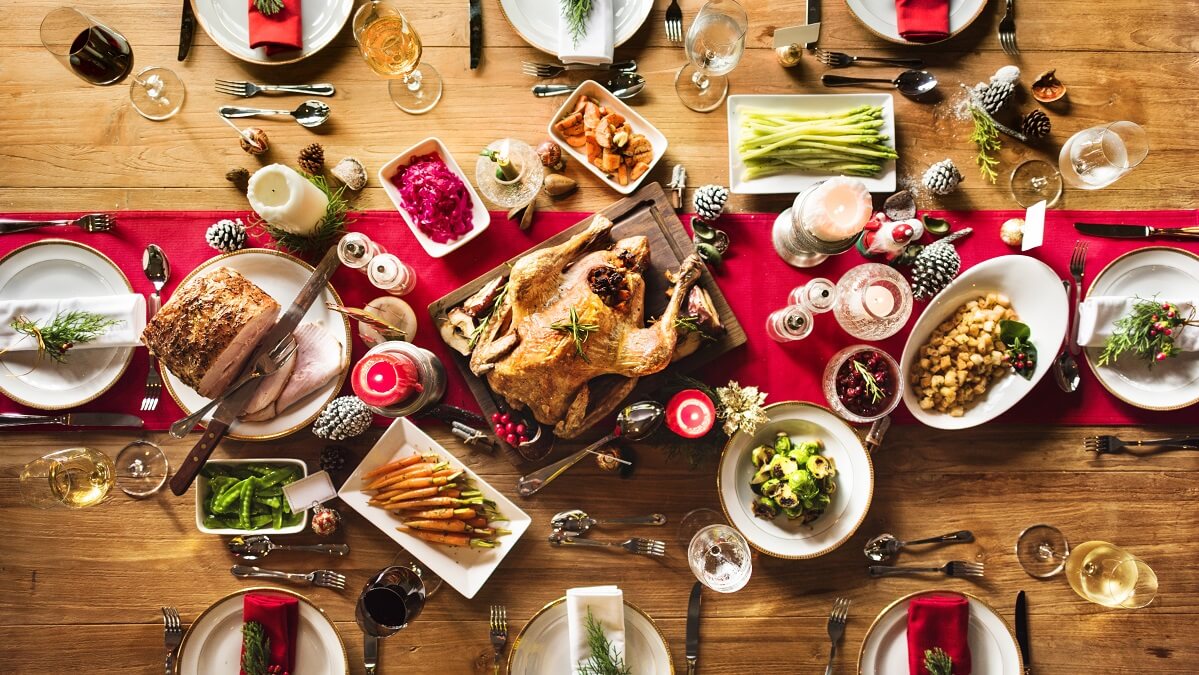The price of making a Christmas pudding or pavlova alongside a home-made roast and bread rolls will cost the average Australian several dollars more per person this year.
Cherries are 30 per cent more expensive than last Christmas, and so are a number of other Australian summer favourites.
“The latest CPI estimates inflation is 9 per cent across the board, but we are seeing fresh produce being the most affected,” said Christina Zorbas from Deakin University’s Institute for Health Transformation.
The institute tracks food prices across the nation, and data provided to the ABC shows on average, almost everything is more expensive.
“We’re in a cost-of-living crisis,” Dr Zorbas said.
The data shows one kilogram of apricots on average costs $12.93, compared to $7.90 a year ago.
A 300g bag of cherries is $8.50 at the check-out compared to $6.50 in 2021, and watermelon is $3.20 per kilo, an increase on last year.
Basics such as free-range eggs ($6.80 for 700g) are almost a dollar higher and two litres of milk is 50 cents pricier.
A humble whole chicken to be roasted at home is going for $5 per kilo (35 per cent higher), roast pork $10 a kilo (16 per cent higher) and a six-pack of bread rolls is $2.50 (25 per cent higher).
Seafood has been affected too, with 300g of raw peeled prawns averaging $12.50, which is a 13 per cent increase on 2021 prices.
Queen Victoria Market fishmonger Lisa Ryland said inflation pain had been exacerbated by widespread flooding in Australia’s south-east.
“Oyster prices are going to be similar, but because of the floods and rains, there’s not as many oysters available,” she said.
“But the farmed fish, which is very popular, like the salmon and ocean trout, that’s gone up by 30 per cent this year.
“So that’s a really big increase.”
The nine-year Queen Victoria Market veteran said operators like her were trying to absorb the costs as best as they could. But after years of lockdowns and shutdowns, she said that’s hard.
“What can I say, it’s difficult. We try and, you know, keep our profit margin so that we can keep our business going while not disappointing our customers. It’s very tricky to navigate,” she said.
Nancy Policheni has been selling fresh fruit and veg at the market for 28 years.
“When we buy from the wholesaler it is no longer $5 a box of something,” she said.
“We’re talking some boxes [at] $50, $60, $100 a box when you’re purchasing, even like watermelon, which at the moment is quite scarce.
“When you’re purchasing 100 kilos, it’s actually a lot of money, a huge investment on our behalf.”
New year, same issues
While the increased cost of food may mean a less lavish Christmas lunch for some, other Australians are struggling to put food on the table at all.
Charity Foodbank is one of a number of organisations seeing a steady increase in demand for its services as the cost of living rises.
The rising cost of food is unlikely to subside after Christmas, and Deakin University’s Dr Christina Zorbas said she hoped the latest data could help spur change in 2023.
“Everyday Australians aren’t to blame for this,” she told the ABC.
“We’ve got a food system that can feed up to 60 million Australians, so there is no reason why we shouldn’t be getting that food to families.
“Things need to change.”
The parliamentary standing committee on agriculture is currently conducting an inquiry into food security, examining supply chain vulnerabilities, climate change and prices.
That inquiry started in October and began taking submissions this month.
Dr Zorbas said the inquiry was important, but some changes could be considered immediately, including reviewing which foods get subsidised.
“We know most Australians don’t eat enough fruit and veg,” she said.
“Less than 10 per cent of the population meets the guidelines.”
Looking for cheaper alternatives could help save costs
But in the short term, there are changes people can make in the grocery aisle and the kitchen to cut costs.
Strawberries are on average nine per cent cheaper this summer than in 2021, and mangoes are nearly 30 per cent less compared to 2020.
Potato prices are stable, tomato prices have dropped and zucchini is almost 20 per cent less.
And iceberg lettuce, which soared 150 per cent in price in the middle of the year because of floods, is back to an affordable $2.28 a head, which is a nine per cent drop from 2021 prices.
Ms Policheni, the fruiterer, says savvy swapping could save people big bucks.
“If people want asparagus and it’s dear, why not go for a broccoli or broccolini,” she suggested.
“Your silverbeets, you can always use kales.
“Christmas lunch with vegetables. Have your root vegetables instead, potatoes, pumpkins, there is always an alternative.”
Lisa Ryland has similar advice for seafood lovers.
“People usually want the same thing at Christmas – prawns, oysters and fresh lobster,” she said.
“And I know Australians want big prawns at Christmas, but the little ones are just as beautiful and there’s no reason you wouldn’t put those on a platter at Christmas.”
 © 2020 Australian Broadcasting Corporation. All rights reserved.
© 2020 Australian Broadcasting Corporation. All rights reserved.
ABC Content Disclaimer

